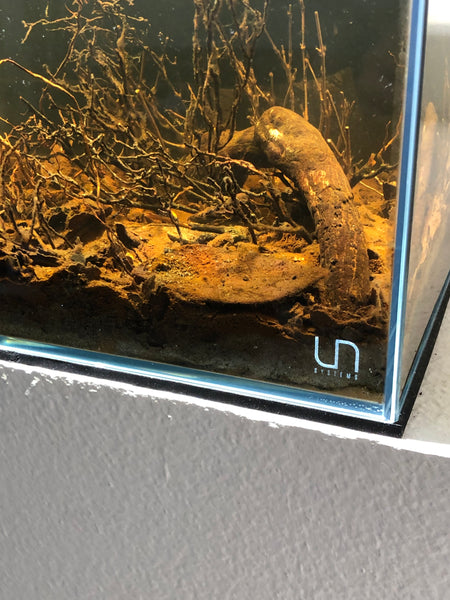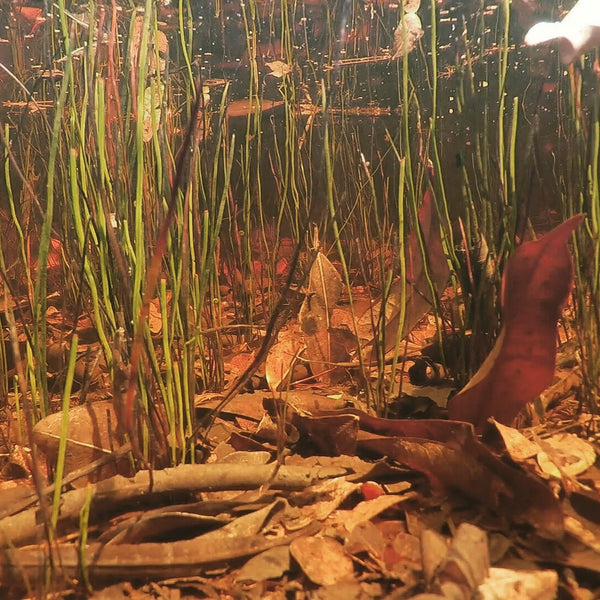- Continue Shopping
- Your Cart is Empty
Just what makes those botanicals tick?
Many seed pods and similar botanicals contain a substance known as lignin. Lignin is defined as a group of organic polymers which are essentially the structural materials which support the tissues of vascular plants. They are common in bark, wood, and yeah- seed pods, providing protection from rotting and structural rigidity.
In other words, they make seed pods kinda tough.

That being said, they are typically broken down by fungi and bacteria in aquatic environments. Inputs of terrestrial materials like leaf litter and seed pods into aquatic habitats can leach dissolved organic carbon (DOC), rich in lignin and cellulose. Factors like light intensity, mineral hardness, and the composition of the aforementioned bacterial /fungal community all affect the degree to which this material is broken down into its constituent parts in this environment.
Hmm...something we've kind of known for a while, right?
So, lignin is a major component of the "stuff" that's leached into our aquatic environments, along with that other big "player"- tannin.

Tannins, according to chemists, are a group of "astringent biomolecules" that bind to and precipitate proteins and other organic compounds. They're in almost every plant around, and are thought to play a role in protecting the plants from predation and potentially aid in their growth. As you might imagine, they are super-abundant in...leaves. In fact, it's thought that tannins comprise as much as 50% of the dry weight of leaves!
Whoa!

And of course, tannins in leaves, wood, soils, and plant materials tend to be highly water soluble, creating our beloved blackwater as they decompose. As the tannins leach into the water, they create that transparent, yet darkly-stained water we love so much!
In simplified terms, blackwater tends to occur when the rate of "carbon fixation" (photosynthesis) and its partial decay to soluble organic acids exceeds its rate of complete decay to carbon dioxide (oxidation).

Chew on that for a bit...Try to really wrap your head around it...
And sometimes, the research you do on these topics can unlock some interesting tangential information which can be applied to our work in aquairums...
Interesting tidbit of information from science: For those of you weirdos who like using botanicals, leaves and such in your aquariums, but hate the brown water (yeah, there are a few of you)- you can add baking soda to the water that you soak your wood and such in to accelerate the leaching process, as more alkaline solutions tend to draw out tannic acid from wood than pH neutral or acidic water does. Or you can simply keep using your 8.4 pH tap water!
MORE "ARMCHAIR SPECULATION": This might be a good answer to why some people can't get the super dark tint they want for the long term...If you have more alkaline water, those tannins are more quickly pulled out. So you might get an initial burst, but the color won't last all that long...

This is something that we need to do a lot more research on. In the end, I'm still a huge believer in the use of reverse osmosis/deionized (RO/DI) water exclusively for botanical-style aquariums. It gives us the best chance of not only manipulating water chemistry characteristics to those we prefer, it also gives us the ability to reap maximum benefits from natural botanical materials- both aesthetically and functionally.

This revelation backs up what many aquarists who dabbled with catappa leaves and bark and other stuff in botanical-influenced aquariums, particularly Betta breeders in Southeast Asia, have asserted for years. In particular, it's thought that these compounds, derived from botanicals, have anti-fungal and anti-parastic properties, and offer protection against oxidative DNA damage and from physiological stressors.
With these health benefits now more clearly understood, there are more reasons than ever to appreciate the role that an environment which accumulates these humic substances can play in overall fish health.

Although the health benefits to fishes are fascinating and actually somewhat of a "game changer", like many hobbyists, my interests lie with the creation of aquarium that present a more natural-looking, functional aesthetic. The physiological benefits are a sort of "collateral bonus!"
And I think we're seeing a lot of hobbyists sort of "getting their feet wet", trying a few leaves and/or botanicals almost tentatively in an aquascape, then "scaling up" to a full-blown, botanical-influenced "blackwater" aquarium.
And with it, not only are we seeing an explosion of new ideas and enthusiasm, we're seeing hobbyists enjoying a sort of "freedom of expression" in their aquascaping that, in some quarters has been lacking for so long, as we rigidly adhered to some "imposed rules" from a variety of sources.

These "rules" were, in my opinion, stifling experimentation and individuality, resulting in a dearth of aquascapes, particularly in the international competitions, which looked almost "uniform" in appearance, with a trend towards creating an "underwater diorama", as one friend put it, instead of a miniature "slice of the bottom" as many have desired.
Nature has her own "rules", and they have little to do with the arrangement of wood and rocks and stuff. Rather, they're more about function and evolution.
I'm not implying that blackwater, botanical-influenced tanks are the "savior of the hobby", or even "the way forward" in the hobby- though I think the takeaways from them just might be! I am implying that seeing a diversity of hobbyists embrace what has been labeled by some as a radical departure from the "typical" style of aquarium (or previously little more than a "fringe sideshow") -and studying and utilizing the idea as a springboard for success with fishes- and as a form of creative expression- is creating a bit of "movement" in an area that was becoming increasingly one directional.
It's nice to see new aquariums taking their cues from Nature, instead of from the latest competition winner!

Let's keep working together to push the state of the hobby farther than ever, backed up with facts and personal experiences! When we aren't sure about something, there is absolutely no shame in saying, "We're just not sure..."
Everybody wins that way.
And there is something really interesting about our "work."
There's been a fair amount of research and speculation by both scientists and hobbyists about the processes which occur when terrestrial materials like leaves and botanical items enter aquatic environments, and most of it is based upon field observations by scientists and ecologists.
As hobbyists, we have a unique opportunity to observe firsthand the impact and affects of this material in our own aquariums! I love this aspect of our "practice", as it creates really interesting possibilities to embrace and create more naturally-functioning systems, while possibly even "validating" the field work done by scientists! It goes without saying that there are implications for both the biology and chemistry of the aquatic habitats when leaves and other botanical materials enter them.

The implications for unique and successful aquarium are almost too numerous to mention!
And, if you look at them objectively and carefully, these amazing botanical assemblages-and the processes which form them- are beautiful, too.
Stay fascinated. Stay curious. Stay open-minded. Stay diligent. Stay observant...
And Stay Wet.
Scott Fellman
Tannin Aquatics








Scott Fellman
Author